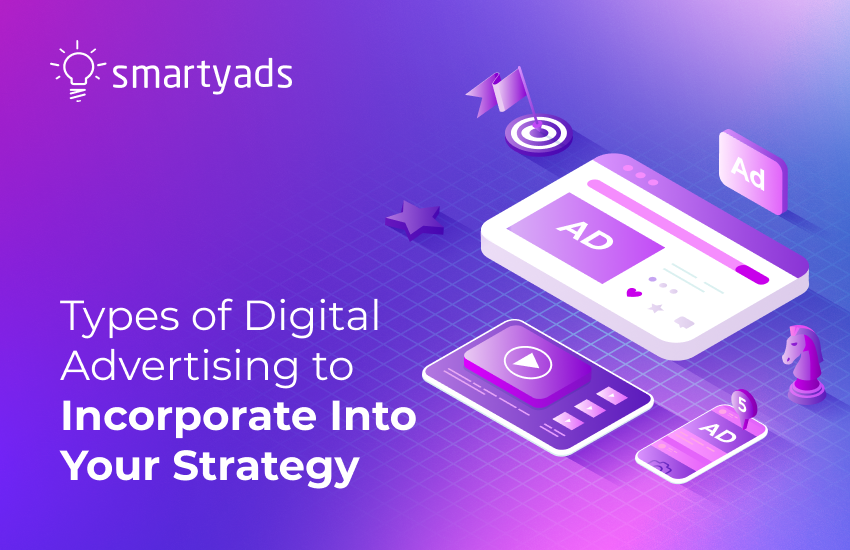While traditional promotional methods like cold calls and print ads can still be effective, going digital is a must for modern businesses to succeed and remain competitive.
Users spend more than 6 hours online daily, so it is essential for you to target them with relevant digital ads to drive traffic and grow sales.
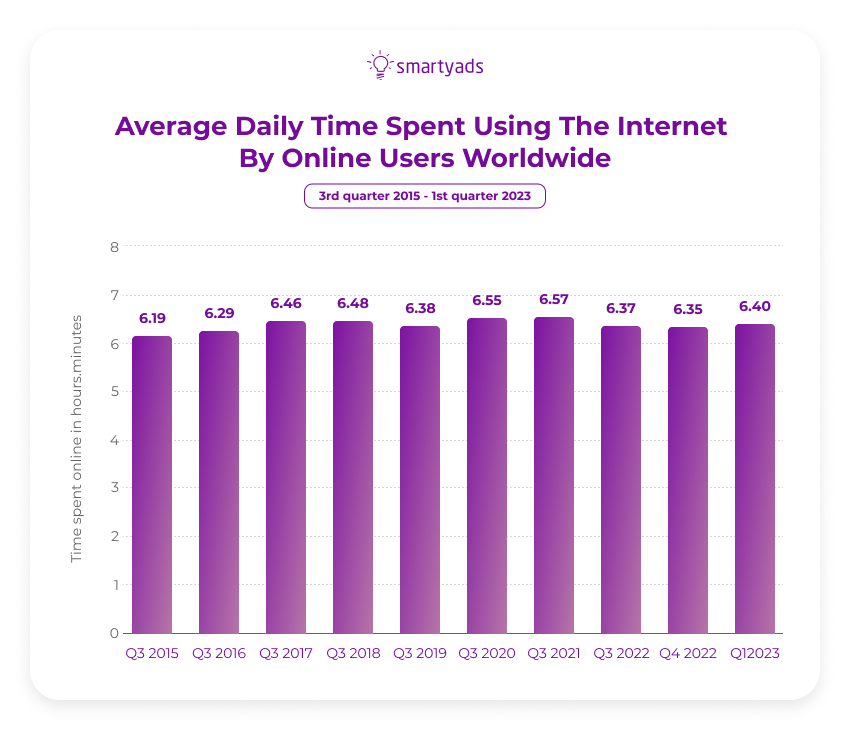
In this article, we will review different types of digital advertising along with their benefits and challenges and share some helpful tips. Keep reading to learn how to make the most of your campaigns and optimize the related processes.
The definition of digital advertising
Digital advertising (also known as online advertising) implies creating and publishing digital ads and other promotional content across various online platforms, including websites, social networks, search engines, mobile apps, etc.
This approach aims to attract the attention of potential customers, build and maintain brand awareness, and increase the conversion rate.
The significance of digital advertising is continuously growing since modern customers search for products across various channels and via different devices. If you rely only on traditional advertising methods, overcoming your competitors and acquiring new customers can be very challenging.
Why you need digital advertising
In the increasingly digital era, businesses must target their customers on the Internet, but this is not the only factor proving the need for digital advertising. Here are some more benefits to keep in mind:
- You can reach your audience across multiple channels. Even if they decide not to purchase your product after the initial interaction, your next ad can convince them to do so;
- Unlike traditional advertisements, digital ones are much more precise. For instance, if you decide to publish an ad in a newspaper, you cannot know in advance who will see it. With digital advertising, you can target customers according to their age, gender, income, location, and other characteristics. This way, your ads will be shown to those users who are most likely to convert;
- Digital advertising ensures flexibility. For example, the design of a digital ad can be updated very quickly, but when it comes to printed ads, this process is much more time-consuming and expensive;
- In general, digital advertising is a cost-effective approach since you can set up your budget, and there is no need to print and distribute marketing materials;
- The results of digital campaigns are easy to measure, as you can use various tools and analytics features of the selected platforms. As for printed media, measuring the performance of such campaigns is way too challenging;
- In terms of customer experience, digital advertising is much more effective. After clicking a CTA button, they are directed right to the page where they can make a purchase or take any other relevant action. In traditional advertising, they will first have to find your website online.
Types of digital advertising
With digital ads, you can reach customers across multiple channels and in various formats. Here are the types of digital advertising you should know about.
Display advertising
Display advertising means creating and publishing ads that consist of a visual element, text, and a link to a relevant platform:
- Banner advertisements (static images);
- GIF ads (animated ads);
- Interstitial ads (ads covering the entire screen);
- Expandable ads (ads that expand if a user clicks them);
- Interactive ads (encourage interaction with the creative).
Note that this is not the full list. Display advertising is a rather broad term; for instance, video or native ads can also be display ads.
The main thing to remember is that display ads combine text, visuals, and CTAs. They are shown to customers on websites or apps.
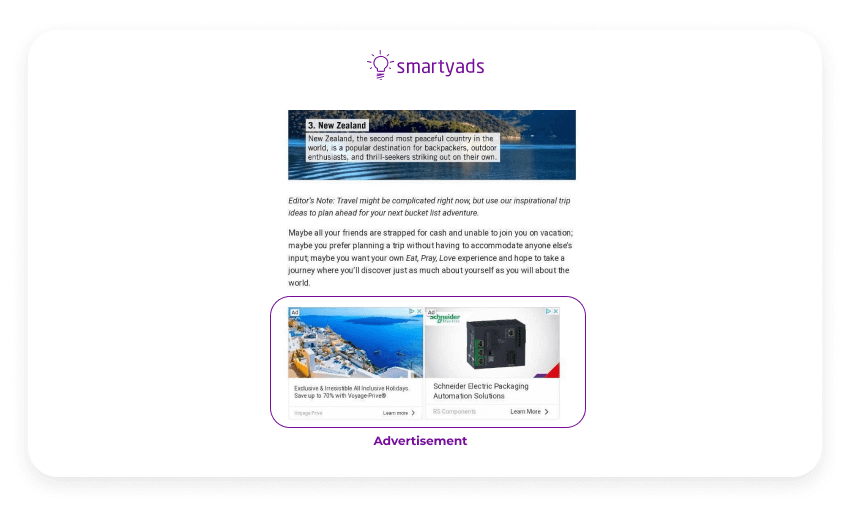
Benefits
Let's review the benefits:
- You can express your creativity and attract the attention of the Internet users;
- Display ads often have a high reach;
- You can increase brand awareness;
- Display ads imply rather precise targeting.
Challenges
As for challenges, here they are:
- Display advertisements tend to have a lower click-through rate (CTR) than search ads;
- Some users may leverage ad blockers, which means that they will not see your advertisements;
- Considering the disadvantages mentioned above, most display ads can result in a rather low conversion rate.
Display ads are a good choice for long-term sales. Make sure to keep your ads branded and valuable to motivate potential customers to click them.
Native advertising
The concept of native advertising means creating ads consistent with the rest of the page content. Unlike, for instance, banner ads, they fit the page naturally, and many users may not even understand that they see an ad.
Basically, native ads are paid, but they look and feel organic. Here are several formats that you may want to try:
- Sponsored content (articles, videos, or any other content that resembles the rest of the page content);
- In-feed advertisements (ads that appear in the users' news or social media feeds);
- Recommendation widgets (ads appearing alongside the rest of the page content and recommending products or links);
- Native ad units (ads thoroughly integrated into the page's or app's theme and design).
Again, this is not the full list. For instance, paid search ads can also be considered native. Anyway, now let's focus on distinctions so that you will learn as much as possible about digital advertising.
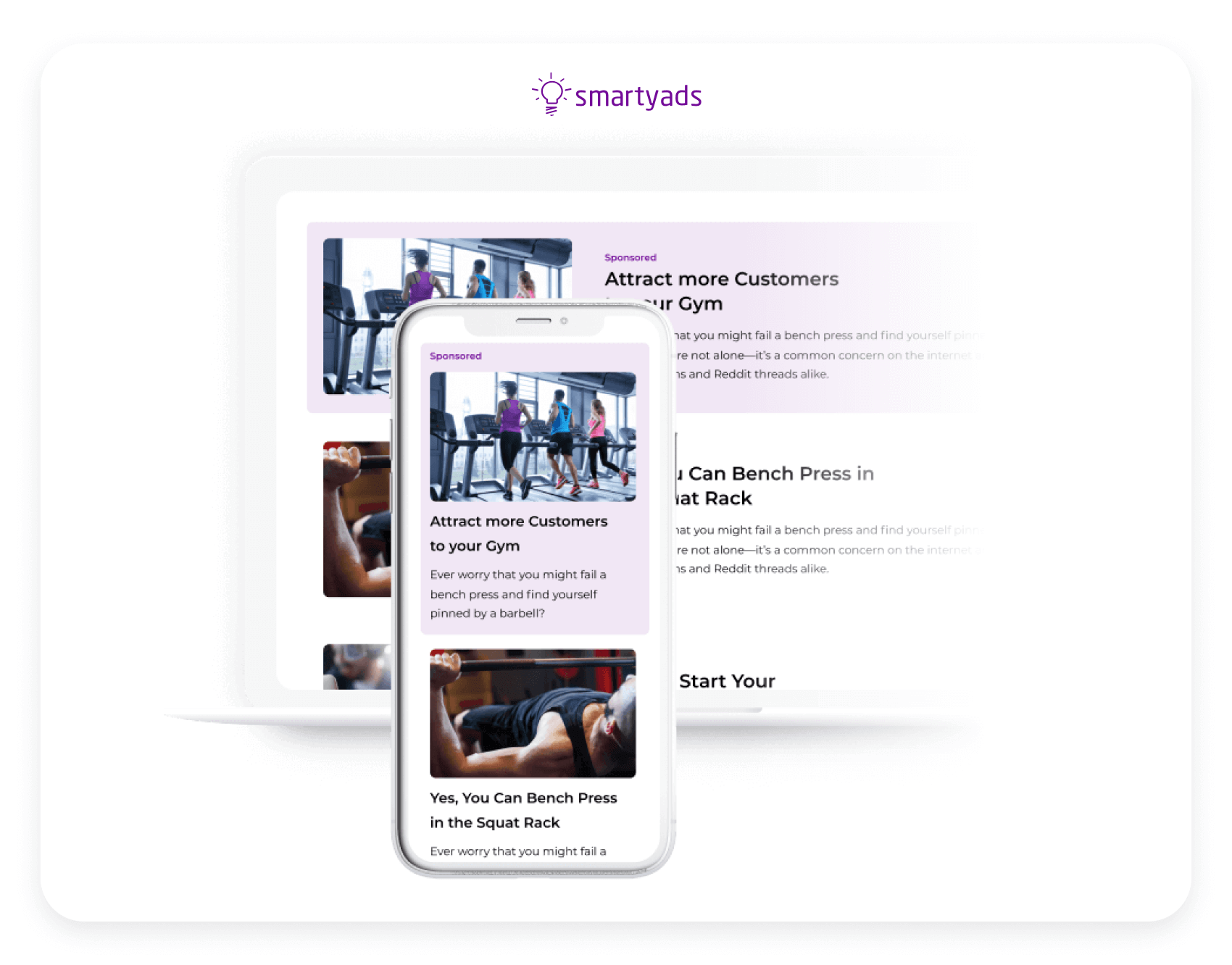
Benefits
The benefits of native advertisements are as follows:
- Native advertisements are less annoying and obtrusive, which can lead to higher engagement;
- Such ads work virtually on any platform, which makes them rather universal.
Challenges
And here are some challenges of native advertising:
- Native ads are often more expensive than display ads;
- While being less annoying, native ads can also simply go unnoticed.
Paid search advertising
Paid search advertising has pretty straightforward work principles. Advertisers pay search engines to get higher rankings on relevant search results. They can be shown in the following formats:
- Traditional pay-per-click (PPC) ads consist only of text and appear at the top, to the right, or below organic search engine results. You pay every time your ad is clicked;
- Google shopping ads provide users with the product photo, price, and your brand's name. Ratings and additional details may be available as well. You are charged when someone clicks your ad;
- Google local service ads are shown at the top of local results, and you pay only when a user contacts you directly through your ad.
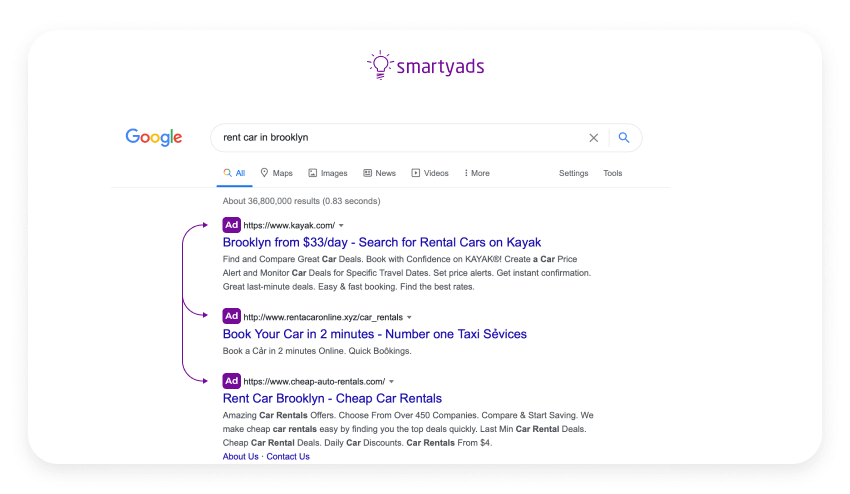
Benefits
Launching paid search ads is virtually a must, and here is why:
- Google processes around 99,000 search requests per second, which means that your ads can reach a wide audience;
- Google ads offer numerous targeting options, and they are easy to set up;
- Since your ads will stand out on the search engine results page, your conversion rate can increase significantly;
- When set up properly, paid search ads can bring the desired results promptly.
Challenges
Meanwhile, some challenges are here as well:
- Simple text advertisements may not be effective enough in terms of attracting attention;
- You pay for clicks, but this does not mean that every click you pay for leads to conversion.
Social media advertising
Social media advertising implies launching paid ads on social media platforms. They can come in different formats, so check what your selected networks offer. Keep in mind that to launch social media ads, you need to create business accounts instead of personal ones.

Besides, note that paying attention to organic social media advertising is also important. Create and publish valuable posts addressing your customers' needs and leverage relevant hashtags to help users find your content.
Add new posts regularly. Otherwise, customer engagement, as well as brand recognition, can be affected. Encourage the creation of user-generated content, too. The same recommendation applies to your website. Conduct thorough keyword research and optimize it for search engines to drive organic traffic.
Benefits
Social media advertising has numerous pros:
- Social media ads are more cost-effective in comparison with paid search ads;
- Apart from clicking your ads, users can like them, post comments, etc. This ensures higher engagement;
- Advertisements on social media platforms often mimic organic content, so they are less annoying;
- When set up in the right way, such ads are shown exactly to your target audience;
- Some social networks allow A/B testing so that you can make data-driven decisions regarding the most effective ads.
Challenges
As for challenges, here they are:
- Social networks require a lot of time and effort. It is not enough to launch your ads. You should also publish relevant content regularly, interact with your followers, etc.
- Social media platforms may change their algorithms from time to time, which may affect the efficiency of your ads;
- Users interact with loads of posts, and it can be challenging for you to attract their attention with your ads.
How to select the right platforms for social media ads?
Social networks are an integral part of digital advertising and not only. Using them, you can interact with your target audience, build trust, deliver customer service, share various updates, etc.
You need to learn more about your customers and their preferences to select the right social media platforms. It is also essential to analyze your competitors — by doing so, you can identify opportunities to overcome your rivals.
Then, after you start building an online presence on the selected social networks, make sure to measure the efficiency of your strategy. If certain platforms do not bring the desired results, focus on those helping you achieve your goals.
Mobile advertising
Mobile ads are any ads shown on mobile devices (smartphones or tablets), and for modern businesses, implementing this type of digital advertising is a must since the number of smartphone users is constantly growing.
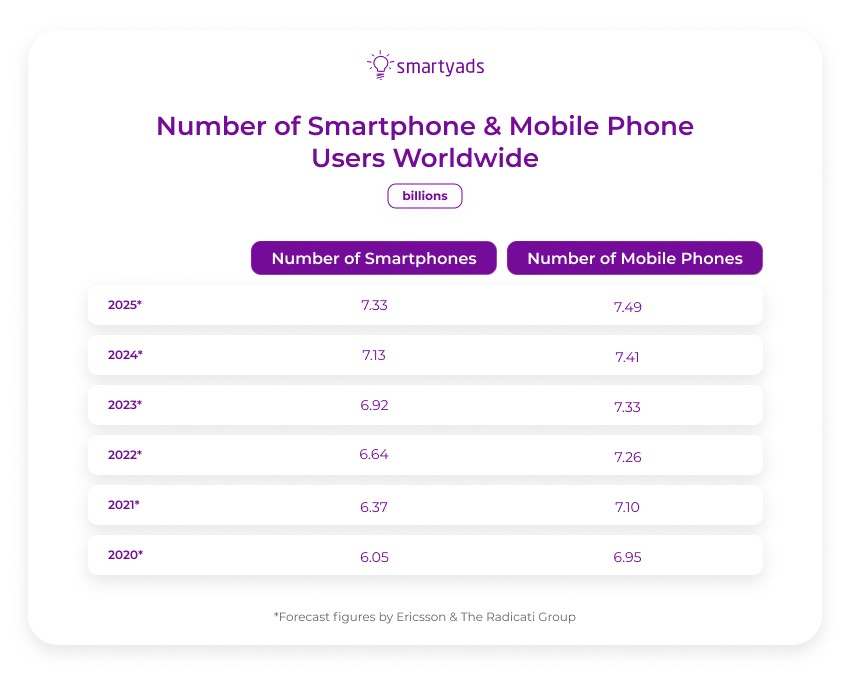
Here are several formats in addition to banner, interstitial, native, and other types of ads that you create for mobile phones:
- In-app advertisements (ads shown within an app);
- Playable ads (users can slightly experience the promoted application);
- Rewarded ads (for instance, users watch video ads and get rewarded in exchange);
- Promotional texts sent via SMS.

Benefits
Take a look at the pros of advertising via mobile devices:
- Since the number of smartphone owners is constantly growing, launching such digital ad campaigns can help you expand the reach and drive sales;
- Most people carry their smartphones along all the time, so you can apply geolocation targeting to make your ads more effective;
- Mobile content is usually cheaper to create;
- The emerging mobile technology introduces new advertising opportunities once in a while.
Challenges
And here come the challenges:
- On a small screen, online advertisements look even more annoying, so a lot of people use ad blockers or simply ignore the ads;
- You need to pay special attention to the design of your ads. Buttons should be easy to click, while the ads should be easy to close to ensure a better user experience;
- Before launching mobile advertising campaigns, you need to ensure your website is optimized for mobile devices. If users click your ad and find it challenging to browse your website on a mobile device, they will most likely leave.
Email advertising
Email advertising is often confused with email marketing. However, these are different tactics. Email ads are added to emails to drive revenue. In turn, email marketing is a broader term applicable to promoting new products, sharing important news, sending newsletters, etc. You can combine both email advertising and marketing techniques to reach better results.

If you already have a significant database of email addresses, you can incorporate clickable ads right into your emails. Alternatively, you can purchase email ad space from trusted partners. Another potential revenue stream is selling ad space in your newsletters to credible companies.
Benefits
Email advertising has the following benefits:
- If you (or your partner) have previously delivered engaging and valuable emails, your products or services will be promoted to an active target audience;
- Compared to PPC and other advertising techniques, email advertisements require less investment;
- 99% of people check their inbox every day, which can help you achieve the desired results faster.
Challenges
As for the challenges, you need to keep in mind the following things:
- For every email, you have to come up with a catchy subject line and copy to motivate users to read your message and take the desired action;
- Your emails may end up in the spam folder, especially if you deliver irrelevant newsletters;
- To increase the conversion rate dramatically, you need a large email database.
Video advertising
Video advertising is a tactic involving the usage of short video clips. Being placed on social media, various websites, and other platforms, video ads are often more engaging than static ones.
Video ads can be skippable and non-skippable and vary in length. However, this is not the only difference:
- Linear ads cover the entire video player, interrupt the main content, and are shown before, in the middle, or at the end of the video. These three types are called pre-roll, mid-roll, and post-roll ads, respectively;
- Nonlinear ads cover only a part of the player and are shown simultaneously with the video;
- Companion ads can only accompany linear or nonlinear ads and may be of different formats and sizes. Companion, linear, and nonlinear ads are types of in-stream ads;
- Outstream advertisements can be displayed as native, interstitial, or in-feed ads. They are placed outside the main content.
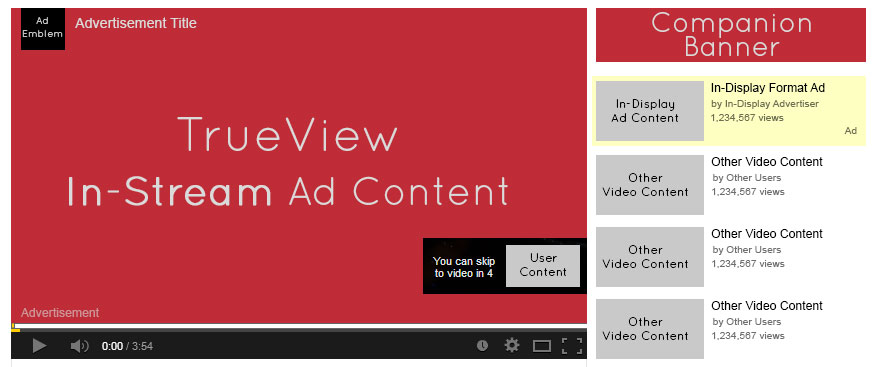
Benefits
Take a look at the benefits of video advertising online:
- Video ads are effective in terms of catching attention;
- You can experiment with a wide selection of formats to find out which of them resonate with your target audience the best;
- Video advertisements are universal in terms of accessibility. Users watch videos on their laptops, smartphones, tablets, and other devices.
Challenges
And here are the challenges you may face:
- Creating video advertisements can be a rather time-consuming process;
- If you launch skippable ads, a lot of users may simply skip them, while non-skippable ads can be considered intrusive.
Audio advertising
Compared to other types of digital advertising, audio ads may seem to be less effective. However, it is not really like that. Audio ads are delivered via voice assistants, music streaming services, podcasts, and other channels.
Now, here are a few statistical facts. The number of voice assistants in use is expected to reach 8.4 billion by 2024. The number of music streaming subscribers keeps growing.
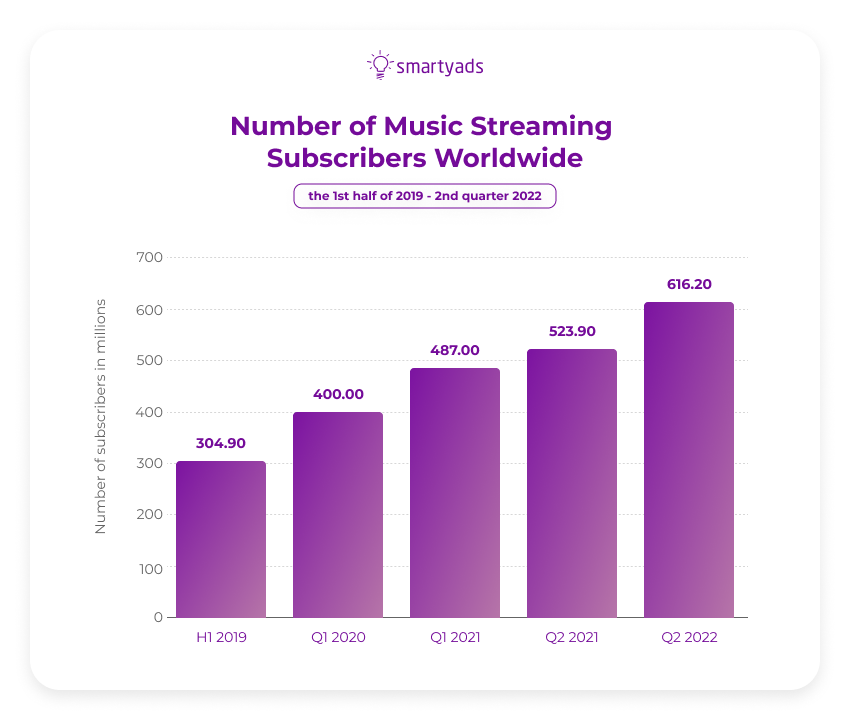
As of 2023, there are almost 465 million podcast listeners worldwide; by 2024, it is forecasted to exceed 504 million. Therefore, neglecting audio advertising (if your target audience belongs to the above-mentioned statistical groups) would be a mistake.
As for types, audio ads resemble video advertisements. There are skippable, rewarded, companion ads, and so on.
Benefits
The benefits of audio advertising are as follows:
- Audio advertising is a universal approach suitable for any industry;
- Recording audio ads can provide you with a competitive advantage since many marketers overlook audio channels;
- With programmatic, audio ads can also be targeted.
Challenges
Now let's review the challenges:
- Audio channels are still less popular than, for instance, video ones, so increasing brand awareness may take some time;
- If you decide to boost your digital advertising strategy with programmatic, you will have to find a platform supporting audio advertisements.
What types of digital advertising to choose?
Since your website has to compete with numerous other websites targeting the same audience, it is crucial for you not to limit yourself to a single type of digital advertising. You need to combine several of them.
At the very least, you should launch search ads on Google and set up advertising campaigns on social networks. Google is the leader among search engines, and the average user devotes almost 2.5 hours to social media per day.
As for other types of digital advertising, everything depends on your target audience. You need to figure out where to meet your customers and what communication channels they prefer. It is also crucial to understand what ad formats are the most appealing to them.
For example, some users may find video content more convincing, while others prefer text ads. Instead of leveraging the already existing statistical data, conduct your own research to create an accurate portrait of your customer.
Besides, make sure to analyze every digital advertising campaign you launch. The collected insights will help you improve your future campaigns. When possible, also conduct A/B tests to increase the efficiency of your digital ads.
When deciding what metrics to track, consider your goals. For instance, if you are going to increase sales with a social media ad, you should first of all monitor the number of clients who clicked this ad and purchased your product.
In turn, the number of comments or likes can provide you with a better understanding of the situation, but these are not the metrics you should focus on in this case.
Programmatic advertising: definition and benefits
The evolution of advertising never stands still. Everything started with traditional methods like newspapers and radio, then advertising became digital, and now we are going through another stage — programmatic advertising.
Basically, it is just an upgraded form of digital advertising but with additional benefits for advertisers. In short, programmatic advertising allows more accurate audience targeting and a reduction in manual work.
Programmatic digital advertising platforms work like this:
Step 1: as an advertiser, you sign up for a demand-side platform (DSP).
Step 2: you set up your ad campaign and specify all the targeting settings.
Step 3: DSP checks the inventory provided by the supply-side platform (SSP, a platform for publishers).
Step 4: DSP identifies a relevant ad space.
Step 5: a bid response is sent to the ad exchange.
Step 6: after the real-time bidding auction, the winning ad is sent to the publisher.
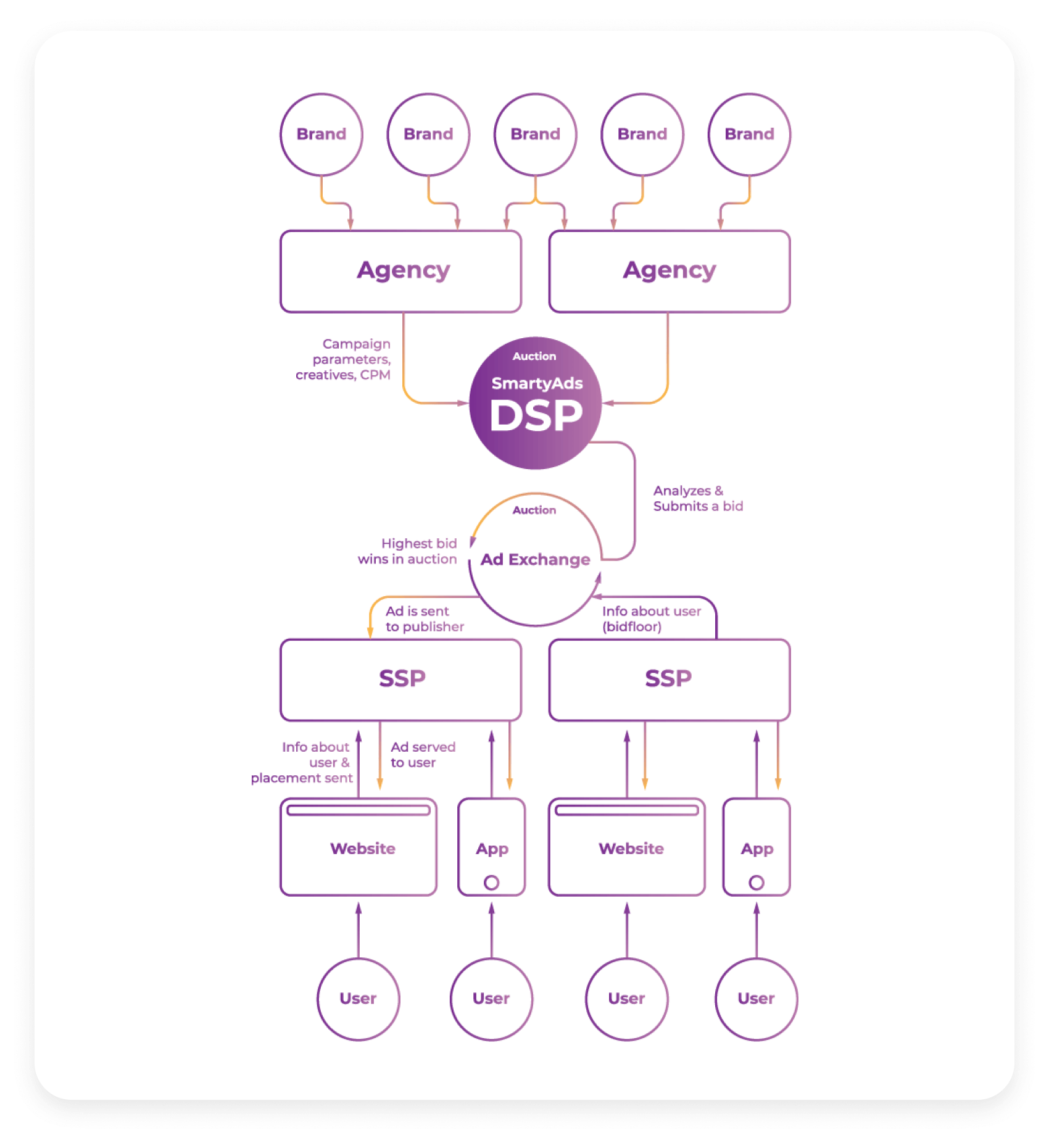
With programmatic advertising, you can launch display, video, audio, native, and other ads. You do not have to look for relevant ad channels on your own — DSP will do this for you. As a result, your ads will be delivered through the most relevant platforms and target users who are most likely to convert.
In the meantime, you will be able to focus on your company's primary tasks.
Programmatic ads are easy to set up and analyze. Some advertising platforms like SmartyAds also offer extra optimization features. For instance, you can specify the conditions under which a traffic source is sent to a white- or blacklist.
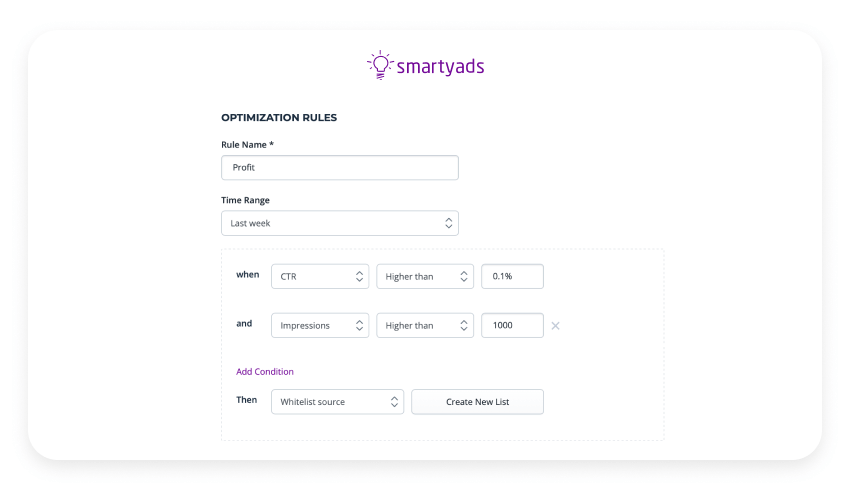
To conclude
For modern businesses, digital advertising plays a crucial role as it allows for increasing brand awareness, driving traffic, acquiring new customers, growing sales, etc.
Therefore, you need to learn more about your audience and identify the right channels for targeting them. The collected insights will help you understand what types of digital advertising to choose and which ad formats can bring the best results.
To simplify the process of finding the right channels and ensure accurate targeting, consider launching your online ads via programmatic platforms.
Both programmatic and manual digital campaigns should be analyzed thoroughly, and it is also essential to pay attention to search engine optimization. You will drive organic traffic by using relevant keywords, getting links from reputable websites, and applying other SEO practices.
Boost your digital advertising campaigns with programmatic DSP. Register now!
FAQ
The available formats are as follows:
- Banner, native, rich media, and audio ads (desktop, mobile web, in-app);
- Video ads (desktop, mobile web, in-app, CTV);
- DOOH ads (digital out-of-home).
Sure, with SmartyAds, you can launch digital in-game ads.
SmartyAds DSP offers a wide list of targeting settings:
- Demographics;
- GPS targeting;
- Language;
- Browser;
- Operating system;
- Device brand;
- Connection type, and many more.
